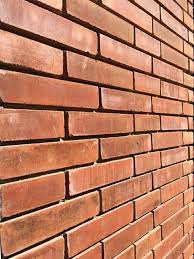In the ever-evolving world of architectural design, innovation plays a pivotal role in shaping the aesthetics of structures. One of the latest trends that have been making waves in the construction and design industry is innovative cladding. This cutting-edge approach to cladding not only enhances the visual appeal of buildings but also provides a range of functional benefits. In this article, we will delve deep into the realm of innovative cladding, exploring its various facets and why it is crucial for modern construction projects.
The Evolution of Cladding
To understand the significance of innovative cladding, we must first appreciate how far the concept of cladding has come. Traditionally, cladding primarily served functional purposes like waterproofing and insulation. However, with the advancements in technology and design aesthetics, cladding has transformed into a multifaceted element of architectural design.

Traditional Cladding vs. Innovative Cladding
Traditional Cladding
Traditionally, cladding materials were selected based on their durability and ability to protect the building from the elements. Materials like brick, stone, and concrete were common choices. While these materials served their purpose, they lacked the flexibility to contribute significantly to the aesthetics of a structure.
Innovative Cladding
Innovative cladding, on the other hand, embraces a wide array of materials and techniques that not only provide protection but also offer stunning visual appeal. Materials such as glass, metal, composite panels, and even photovoltaic cells are now being used as cladding materials. This opens up a world of creative possibilities for architects and designers.
Aesthetic Enhancement Through Innovative Cladding
Visual Versatility
Innovative cladding allows architects to experiment with different textures, colors, and patterns, giving buildings a unique and visually striking appearance. The use of materials like glass can create a sleek and modern look, while natural stone cladding can provide a timeless and rustic charm.
Energy Efficiency
Beyond aesthetics, innovative cladding can contribute to a building’s energy efficiency. For instance, using photovoltaic cells as cladding material can harness solar energy, reducing the building’s reliance on traditional power sources. This not only lowers energy costs but also aligns with sustainability goals.
Durability and Low Maintenance
Innovative cladding materials are chosen not only for their visual appeal but also for their durability. Modern cladding materials are designed to withstand the test of time, requiring minimal maintenance. This means that once a building is clad innovatively, it will retain its beauty for years to come without significant upkeep.
Applications of Innovative Cladding
Innovative cladding has found applications in various types of buildings, from commercial structures to residential homes. Let’s explore some of the most common applications:
Commercial Buildings
In the realm of commercial architecture, innovative cladding can make a powerful statement. Glass curtain walls, for instance, are popular in modern office buildings, creating an open and inviting atmosphere while maximizing natural light.
Residential Homes
Innovative cladding is not limited to large-scale projects. Even in residential architecture, homeowners are increasingly turning to innovative cladding to give their homes a unique character. Wood and metal cladding, for example, can provide a contemporary and sleek look to suburban homes.
Cultural and Public Spaces
Innovative cladding has also found its way into cultural and public spaces. Museums, theaters, and art galleries often employ innovative cladding to create a visually stimulating environment that complements the purpose of the space.
Conclusion
Innovative cladding has emerged as a game-changer in modern architectural design. Its ability to enhance aesthetics, improve energy efficiency, and ensure durability makes it an indispensable element in construction projects today. As we continue to push the boundaries of design, innovative cladding will likely play an even more significant role in shaping the buildings of the future. For architects, designers, and builders, embracing innovative cladding is not just a choice; it’s a step towards creating iconic and sustainable structures that stand the test of time.








Comments 1